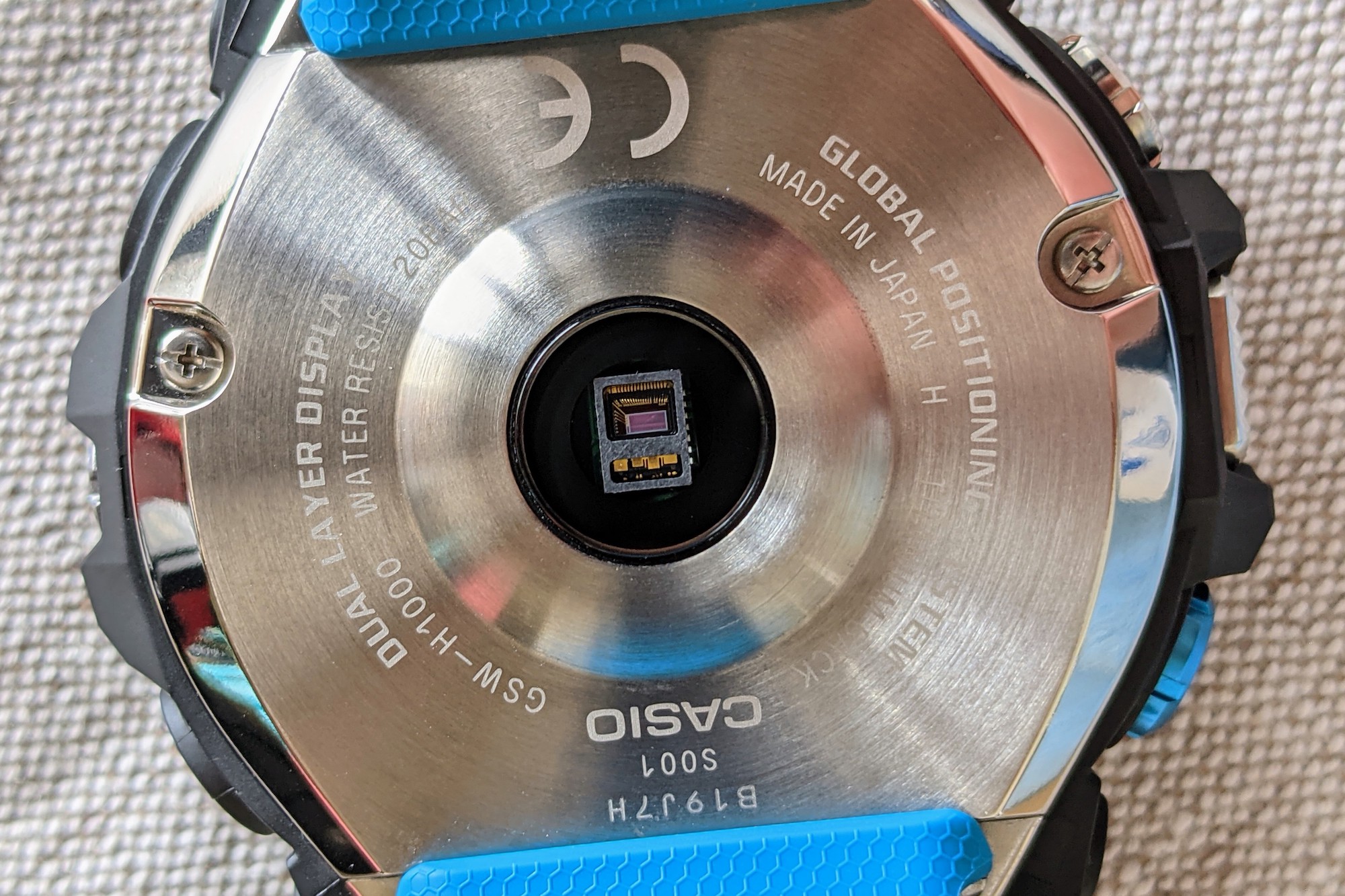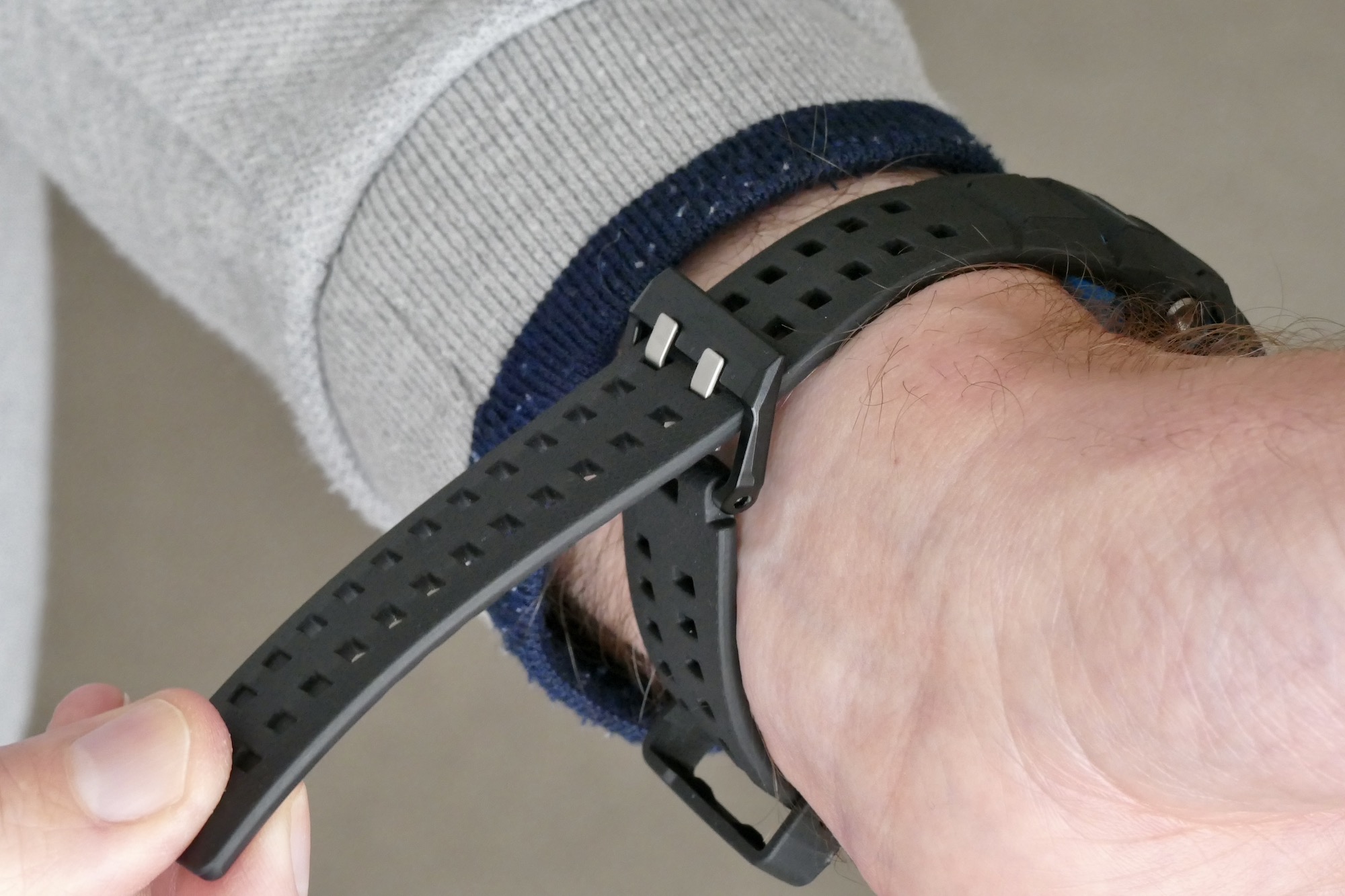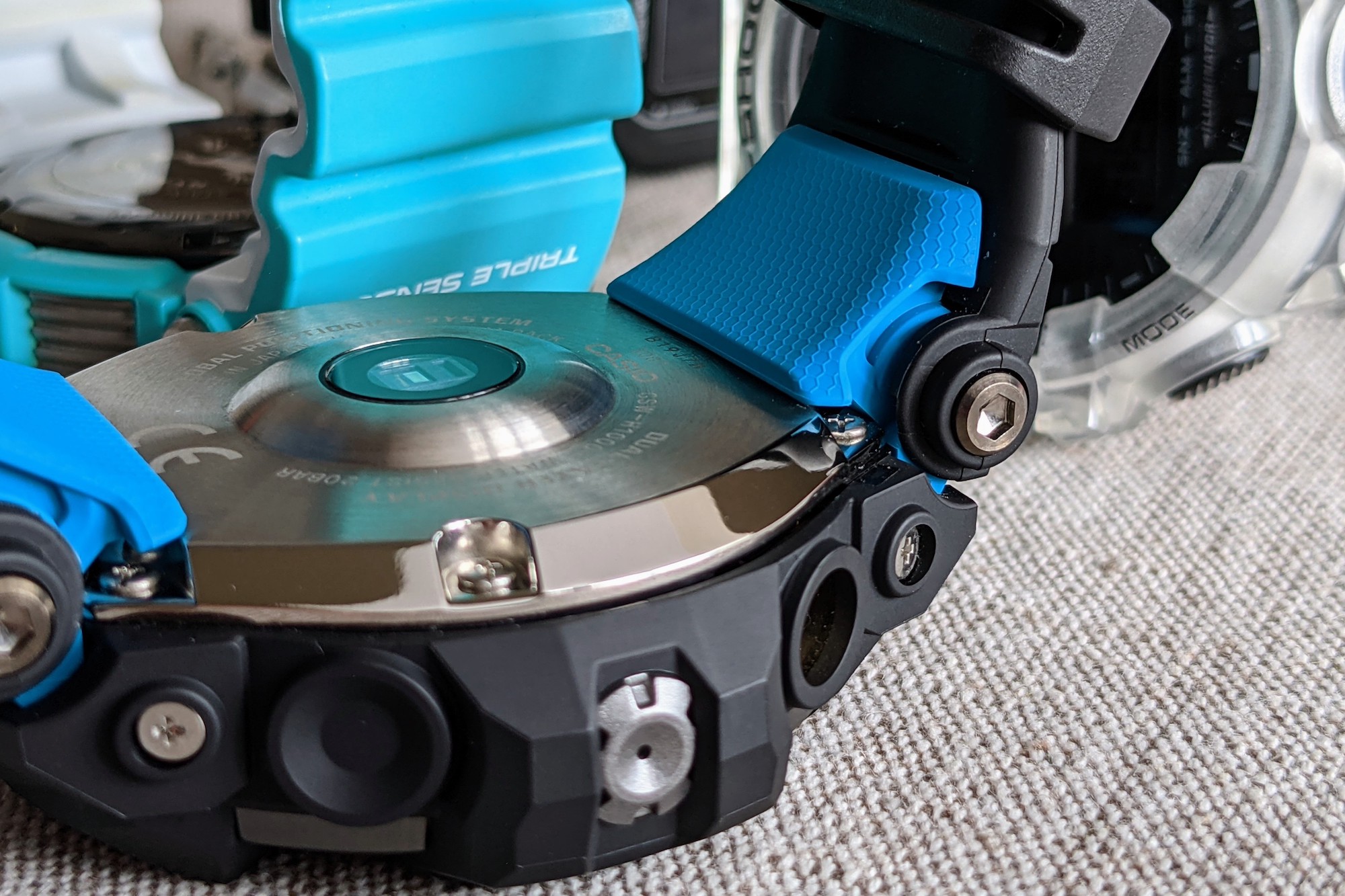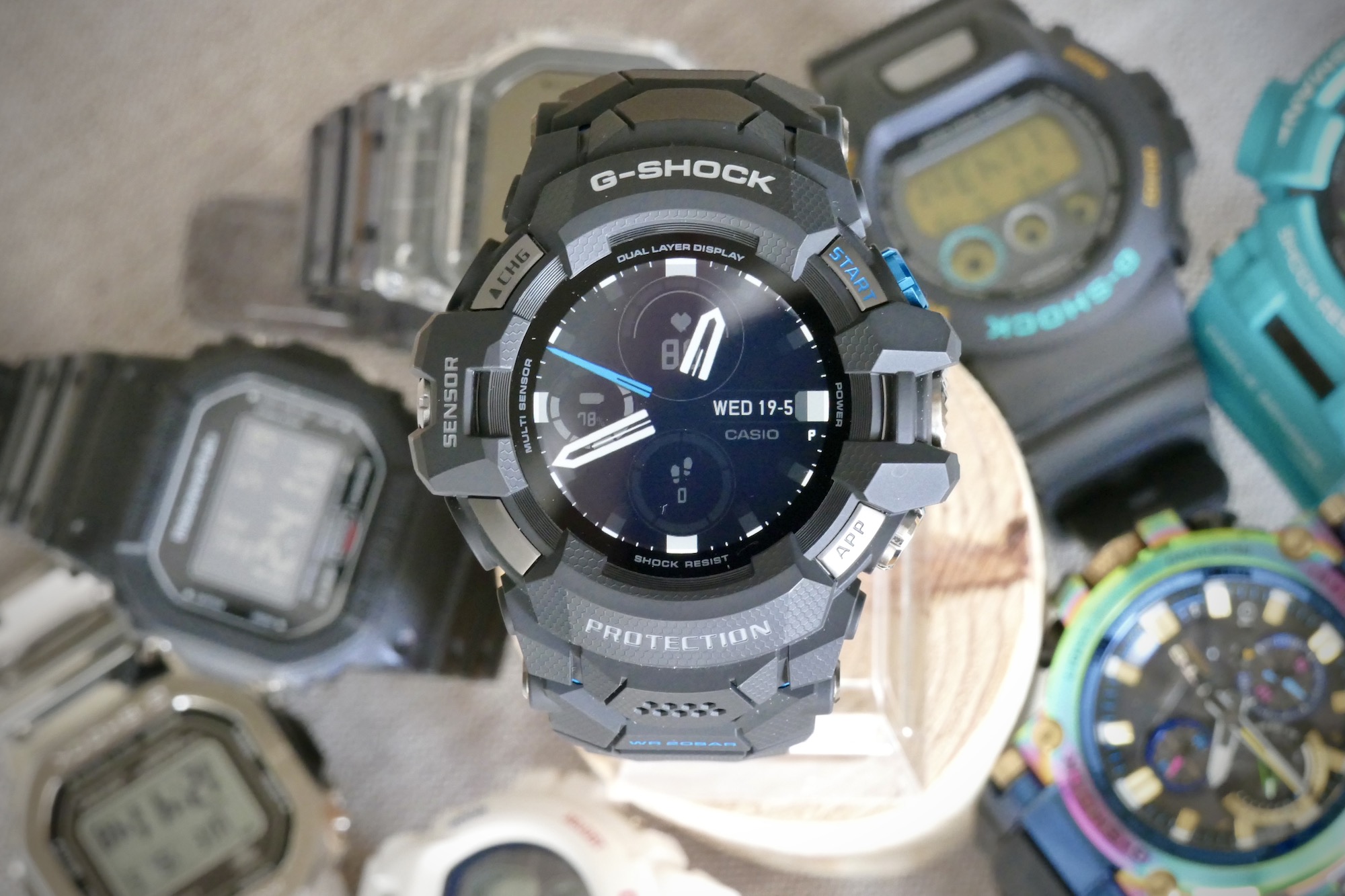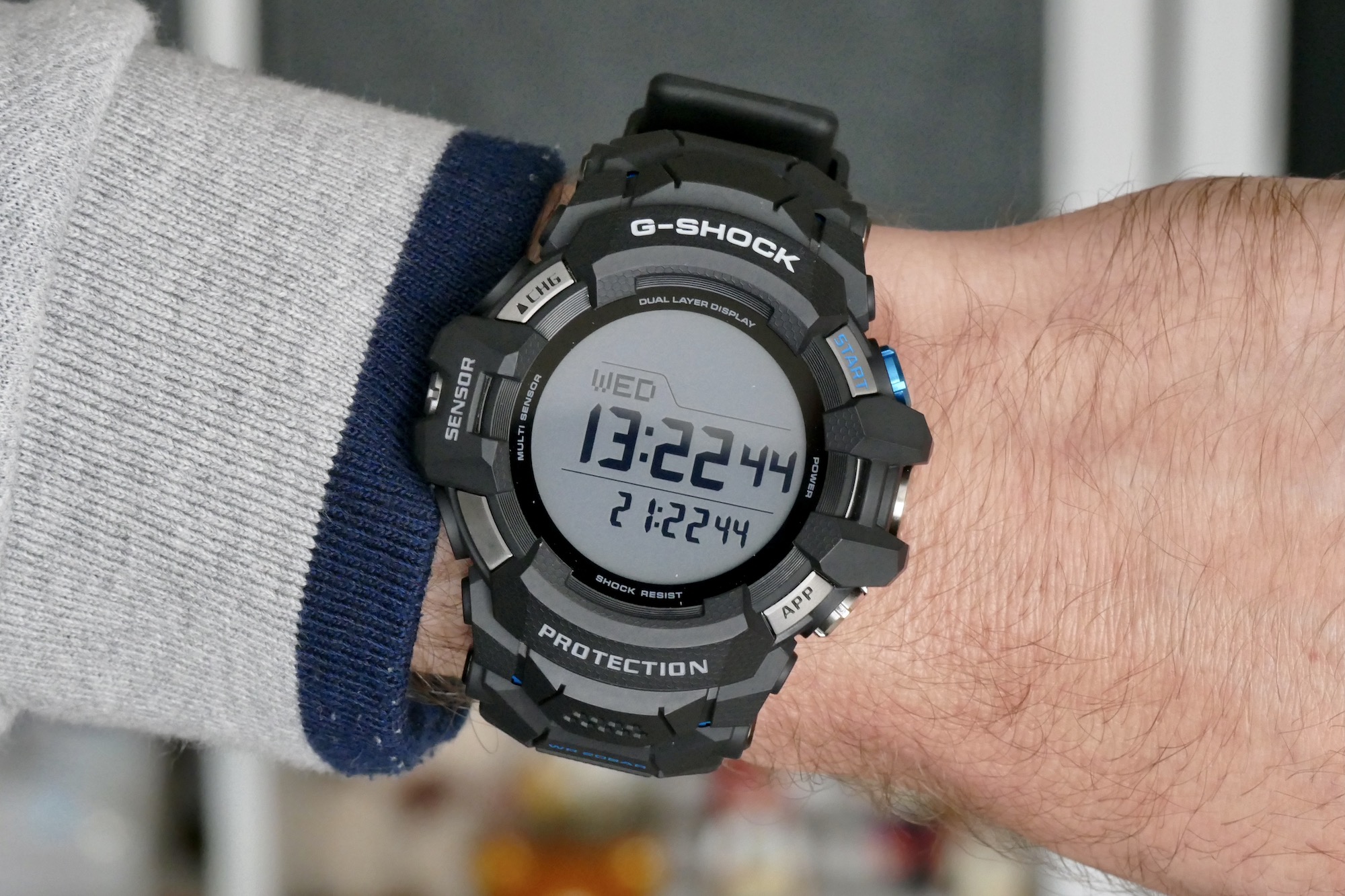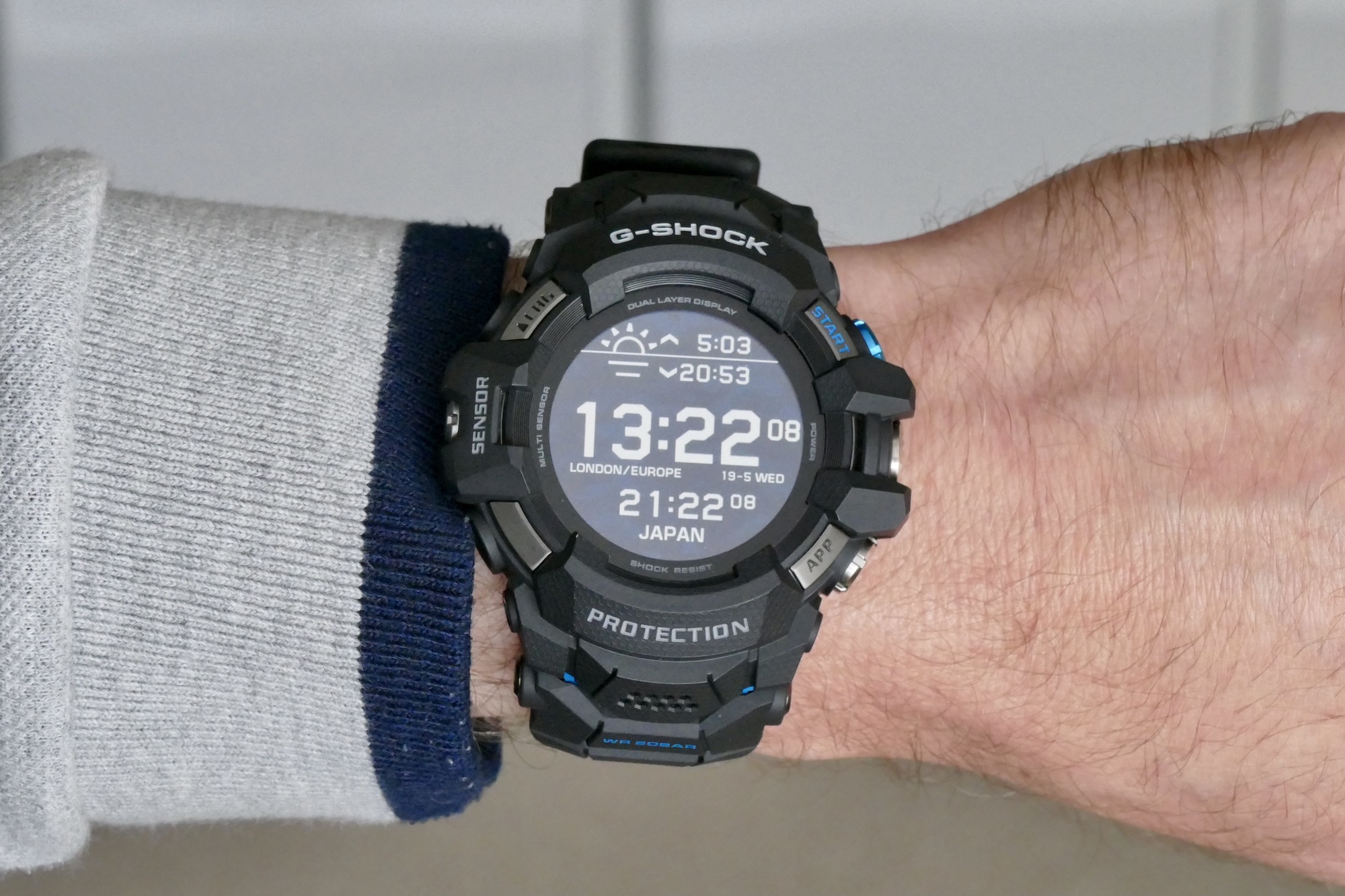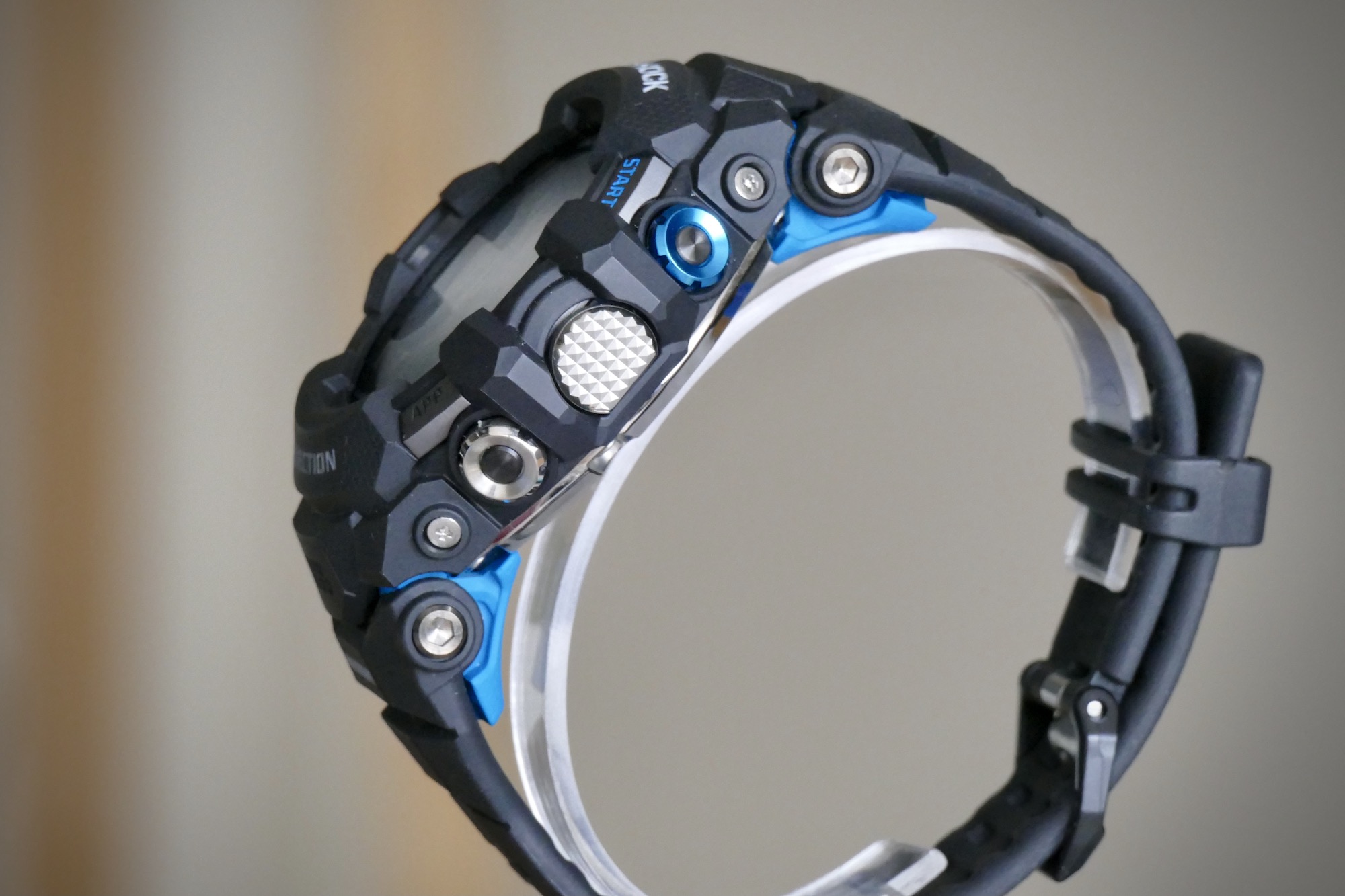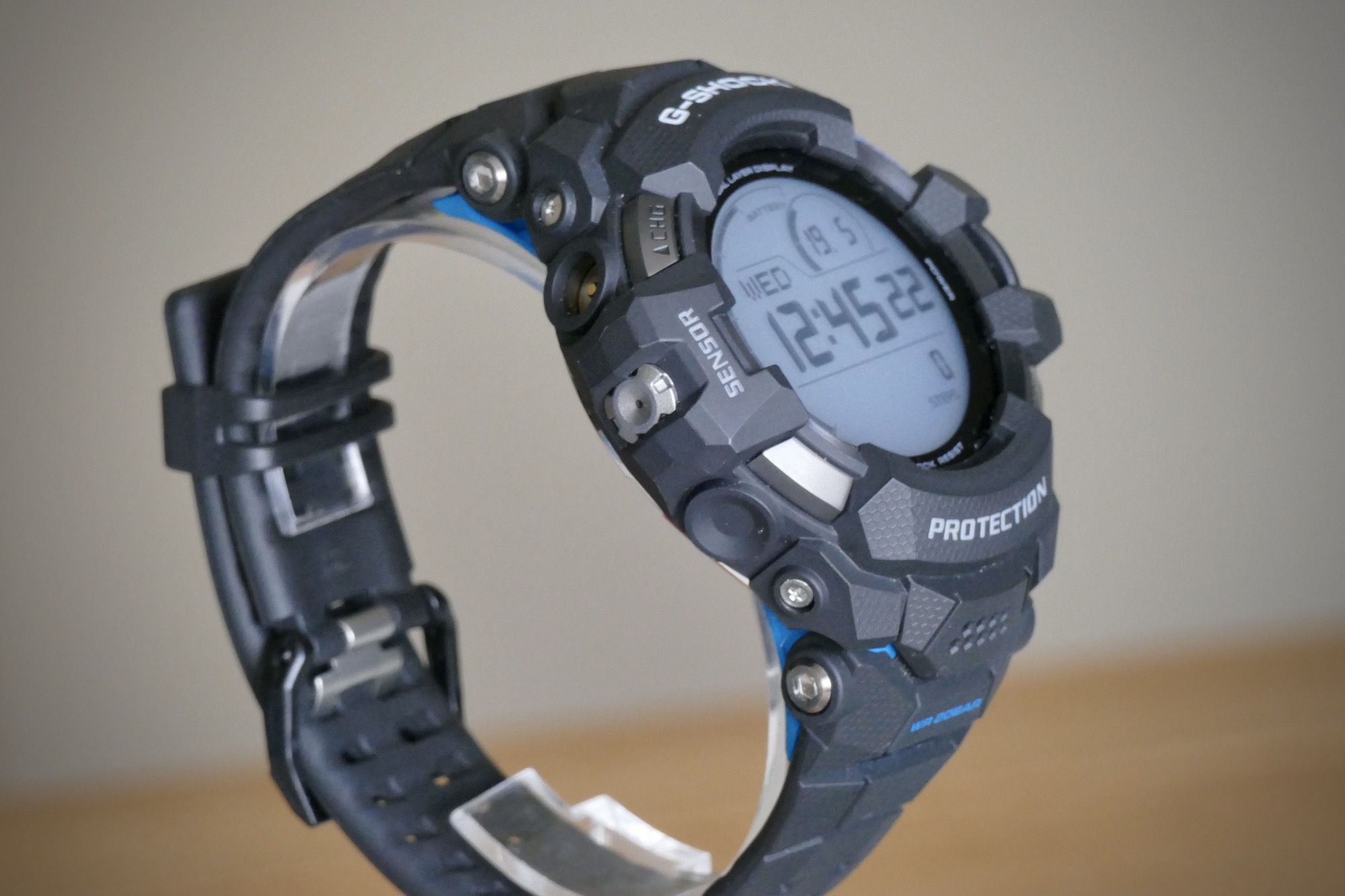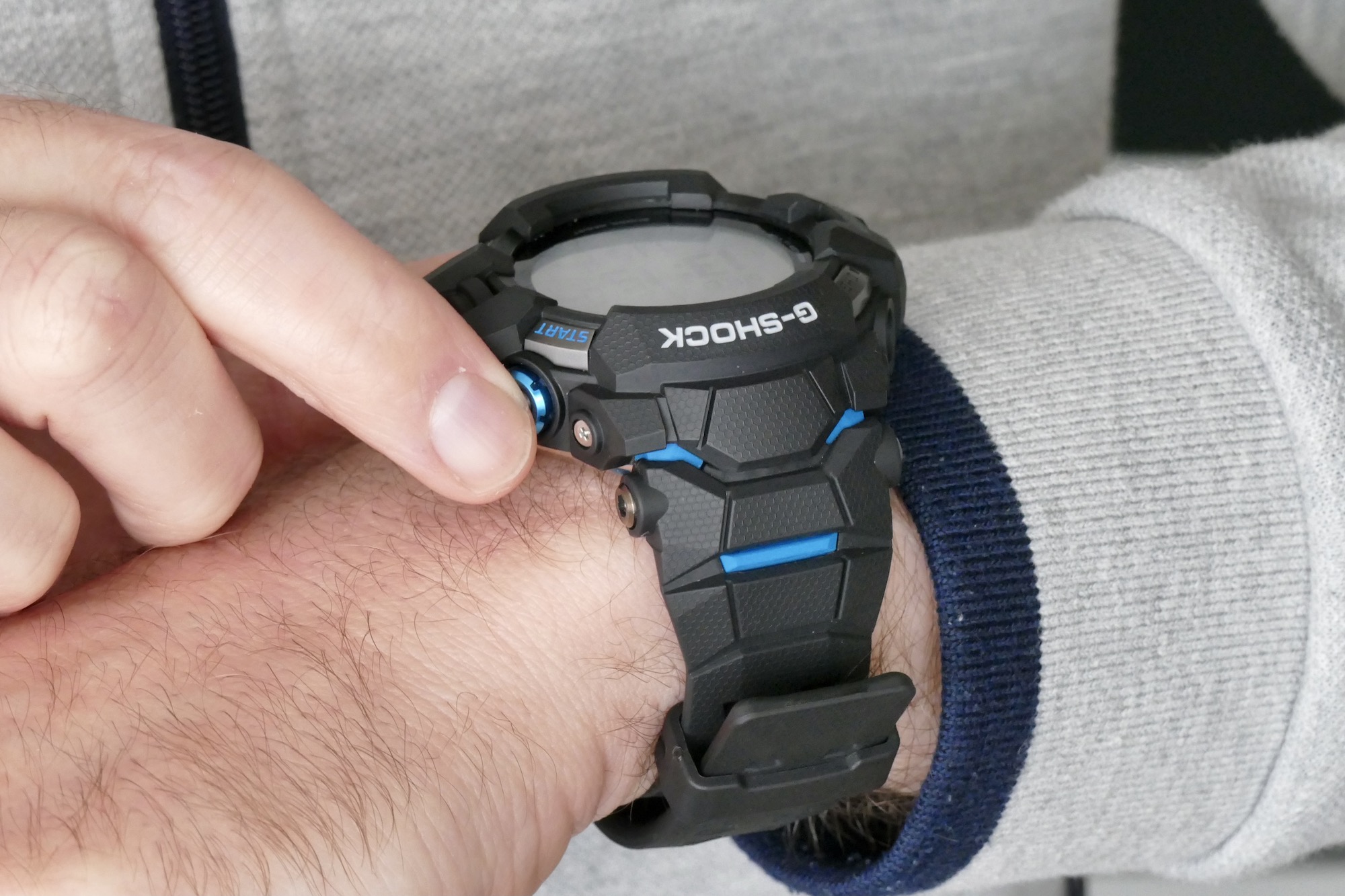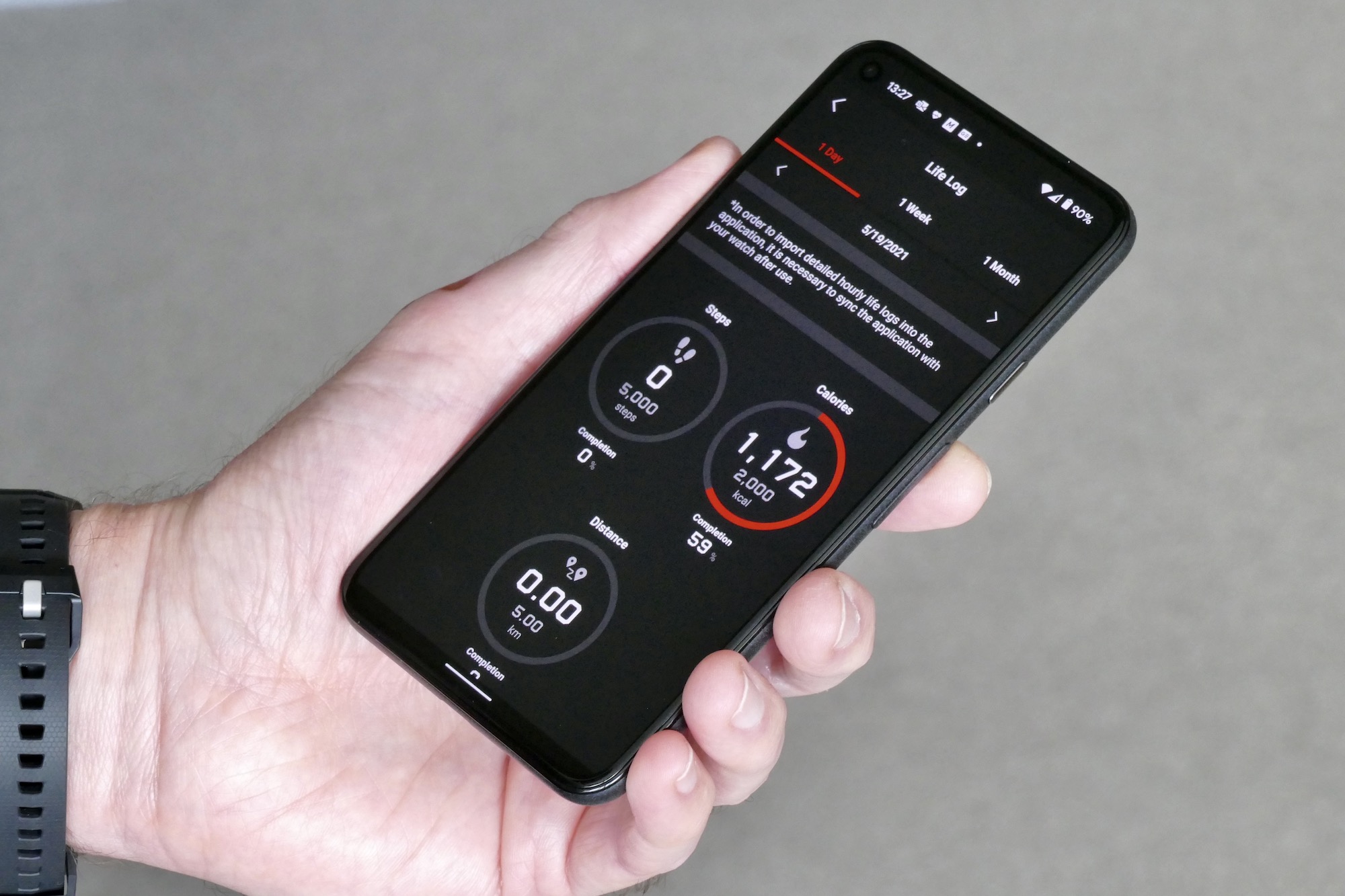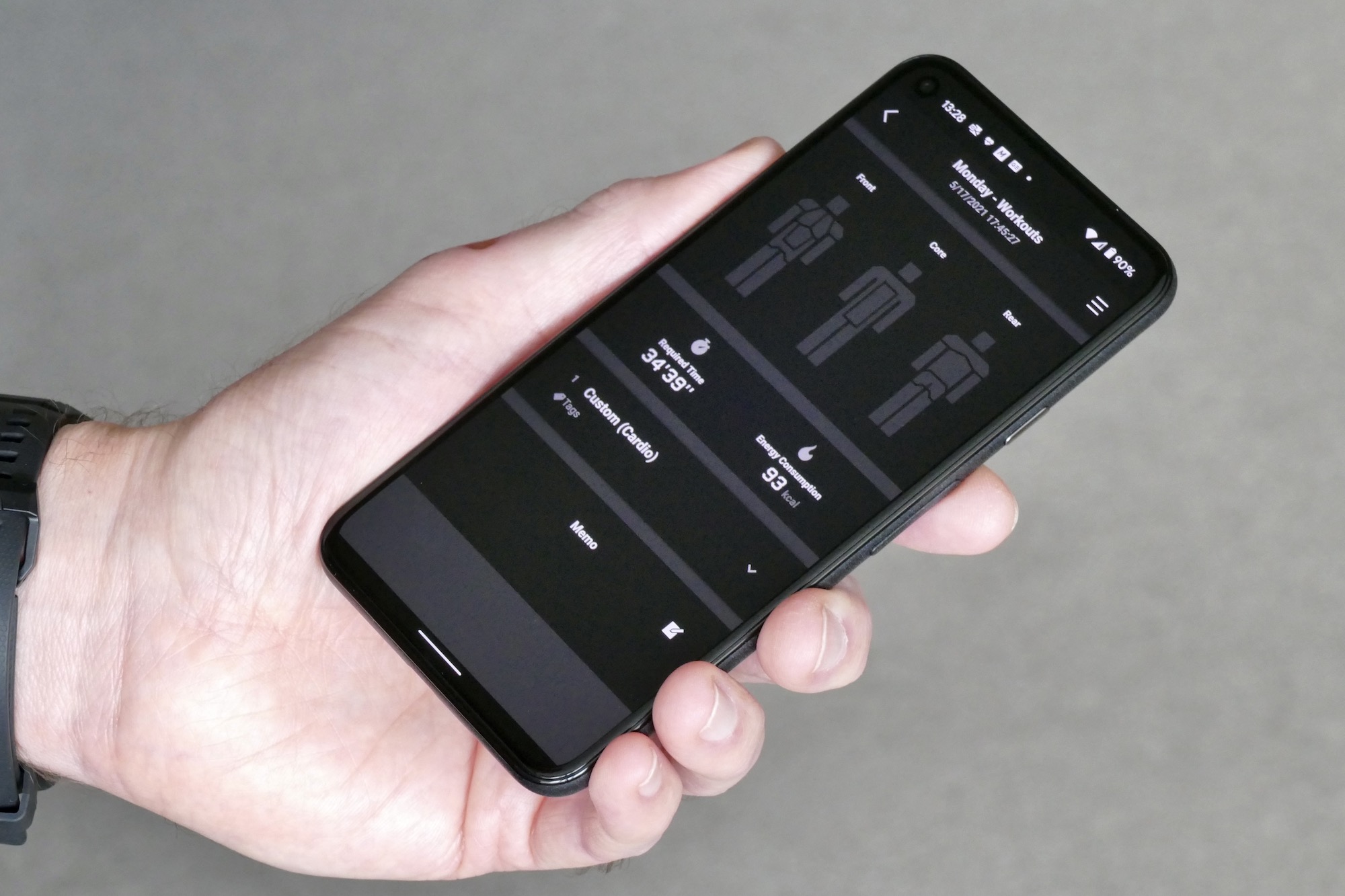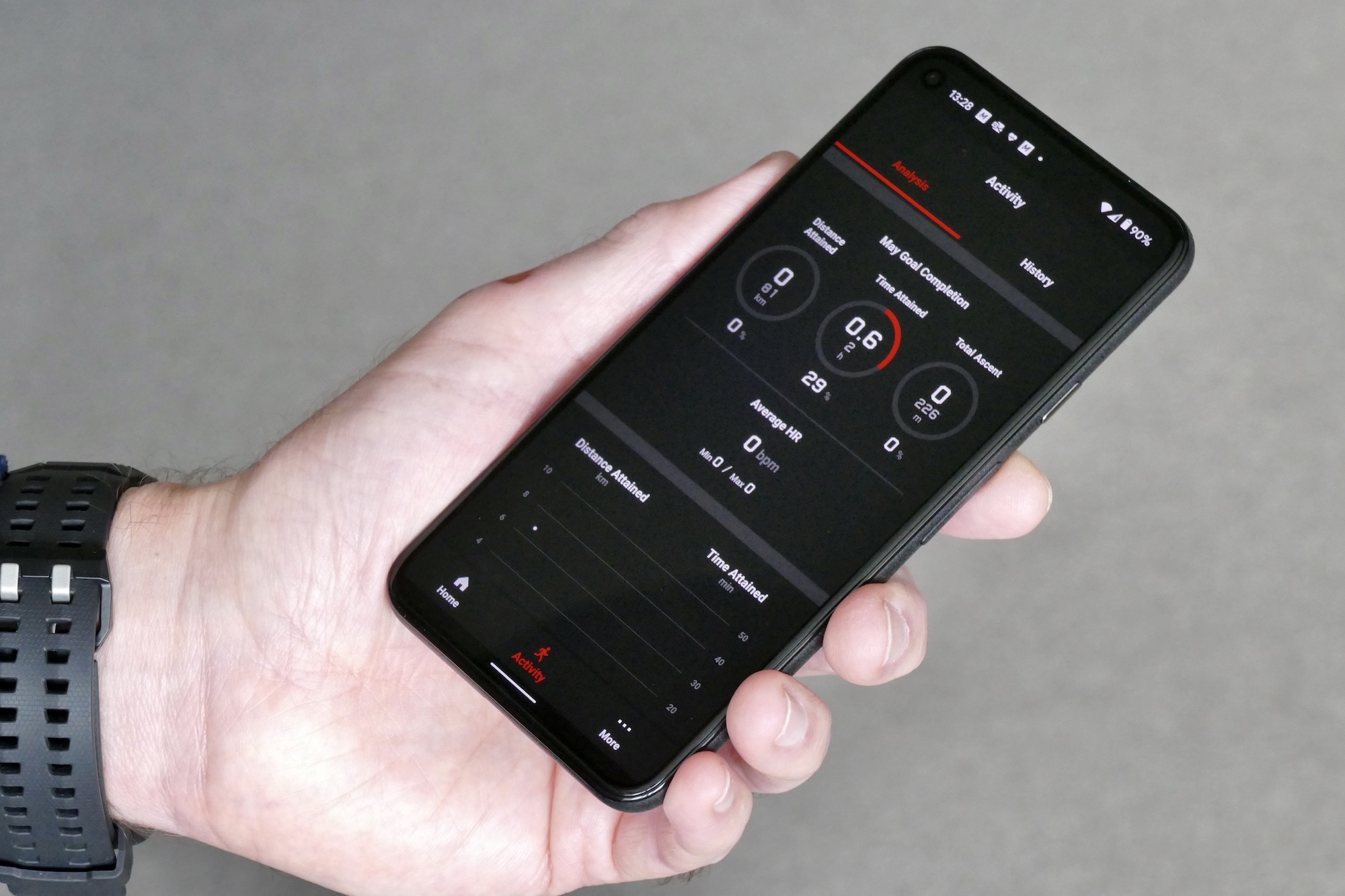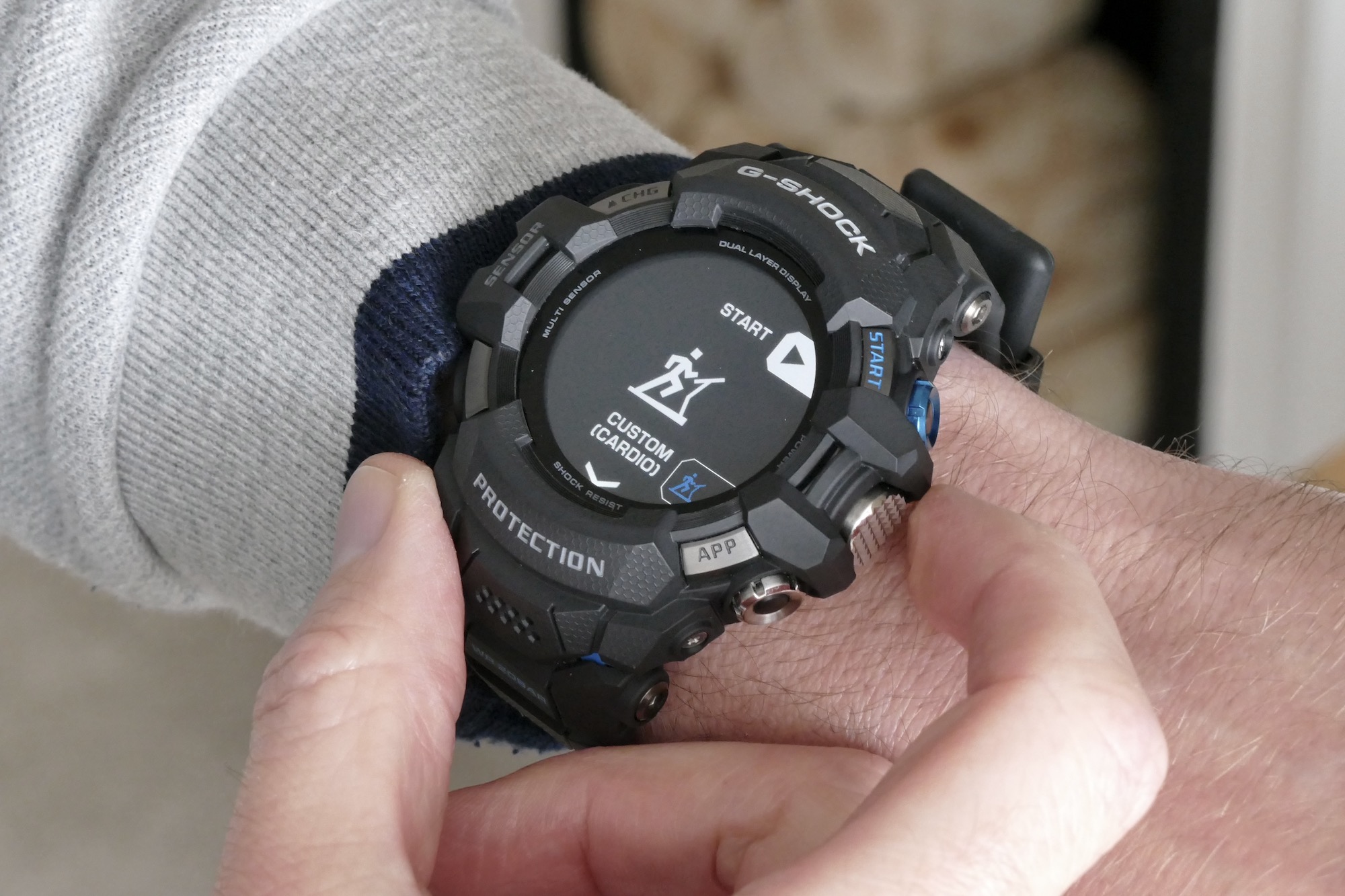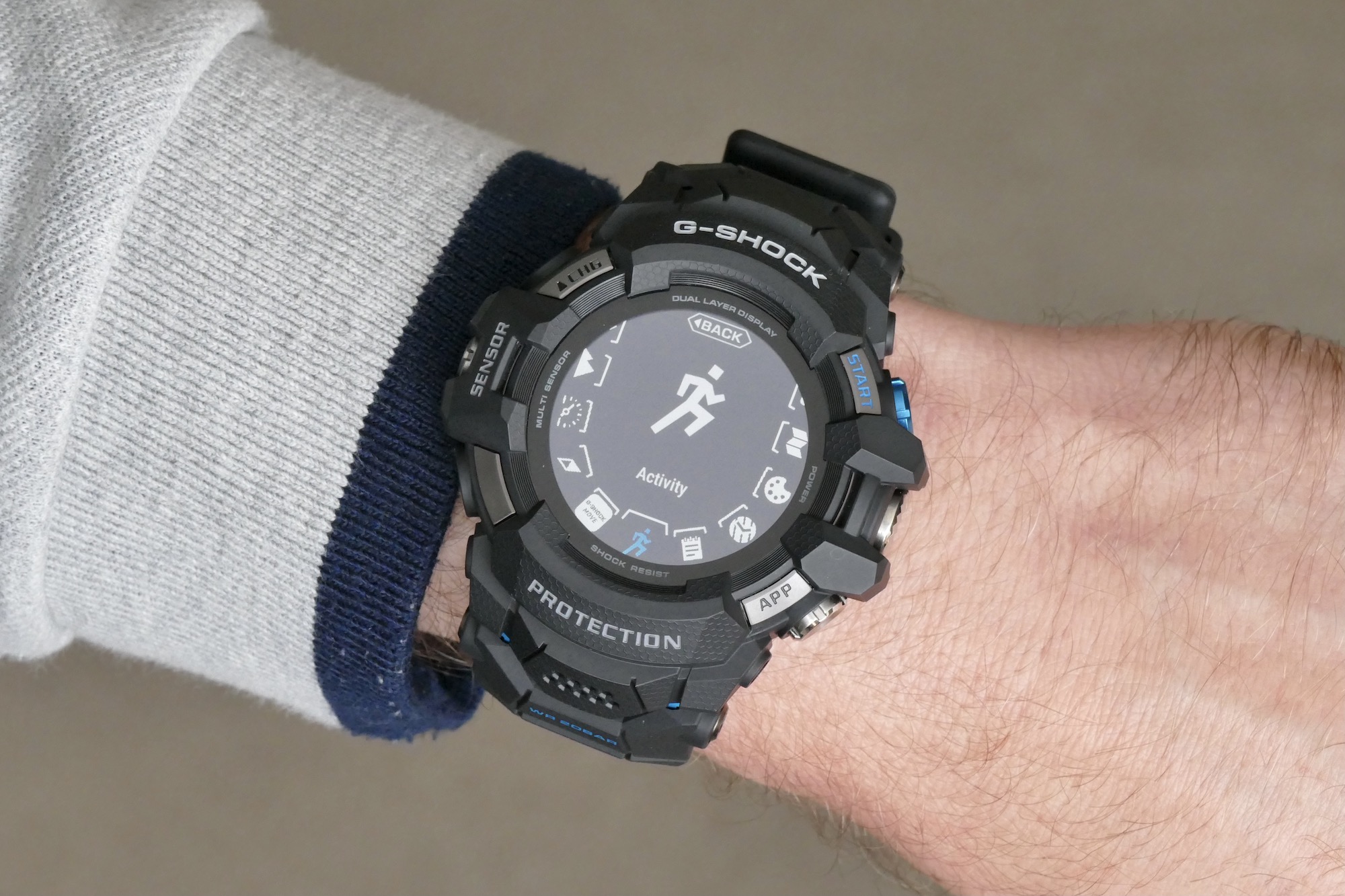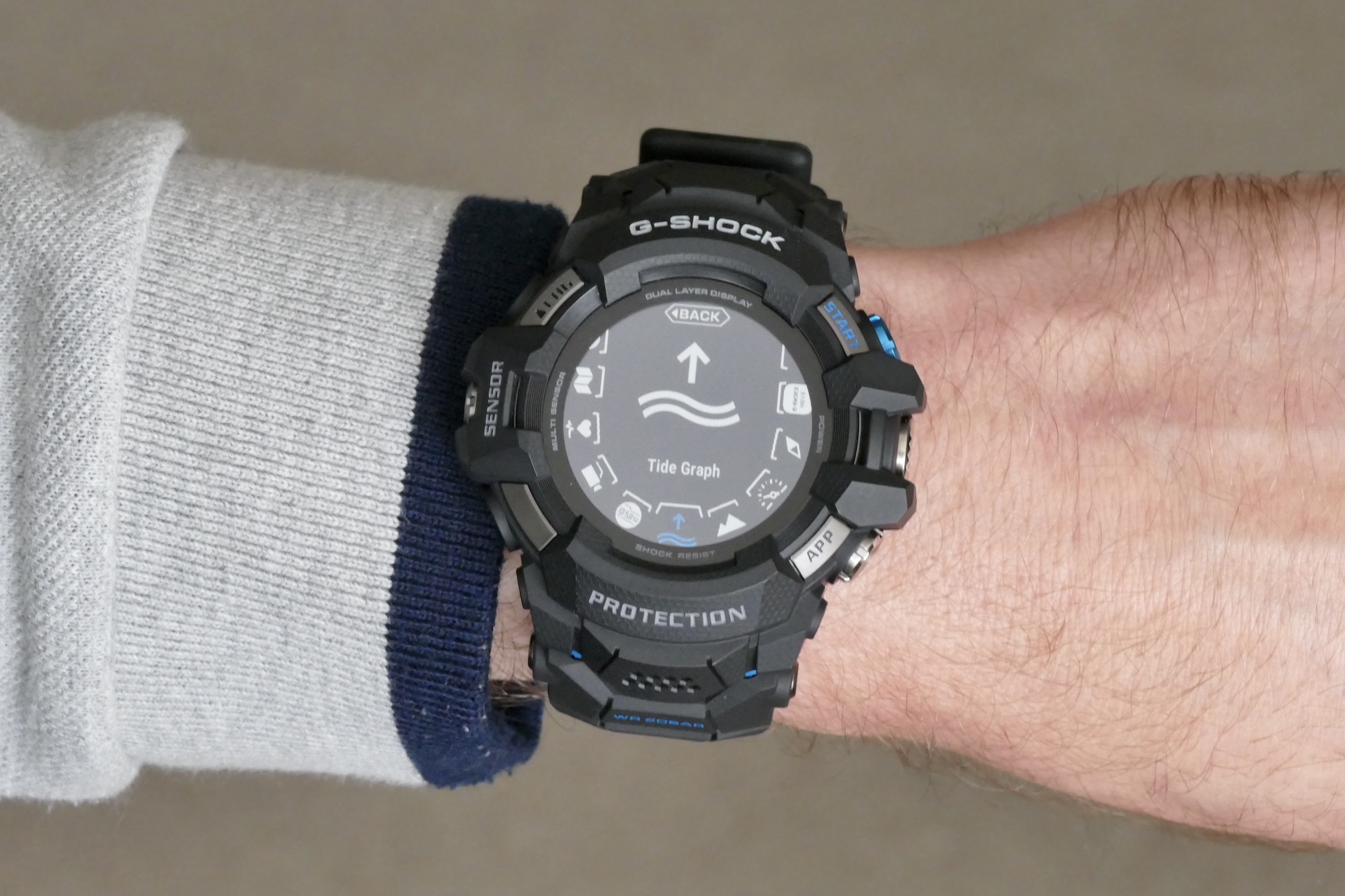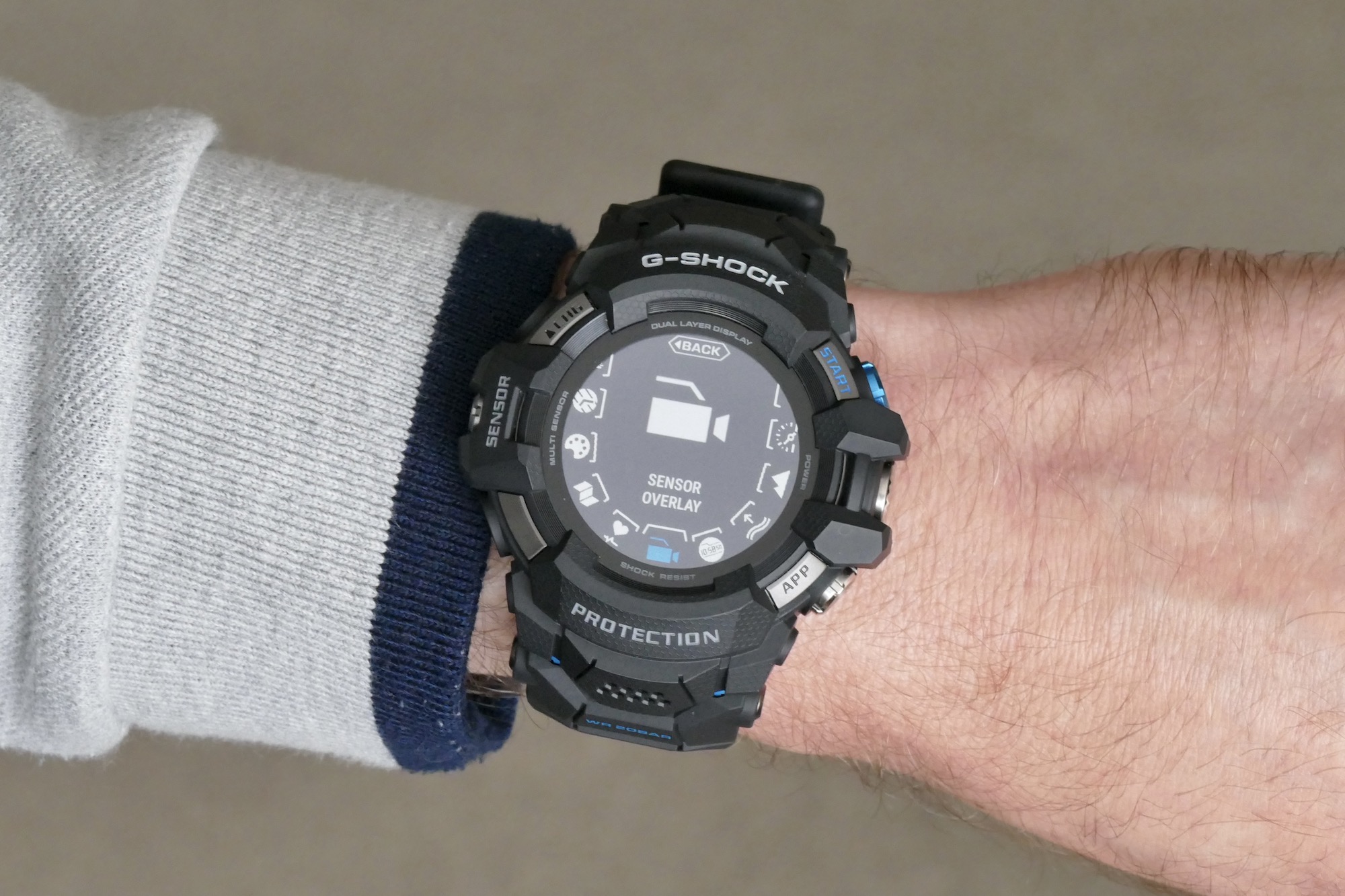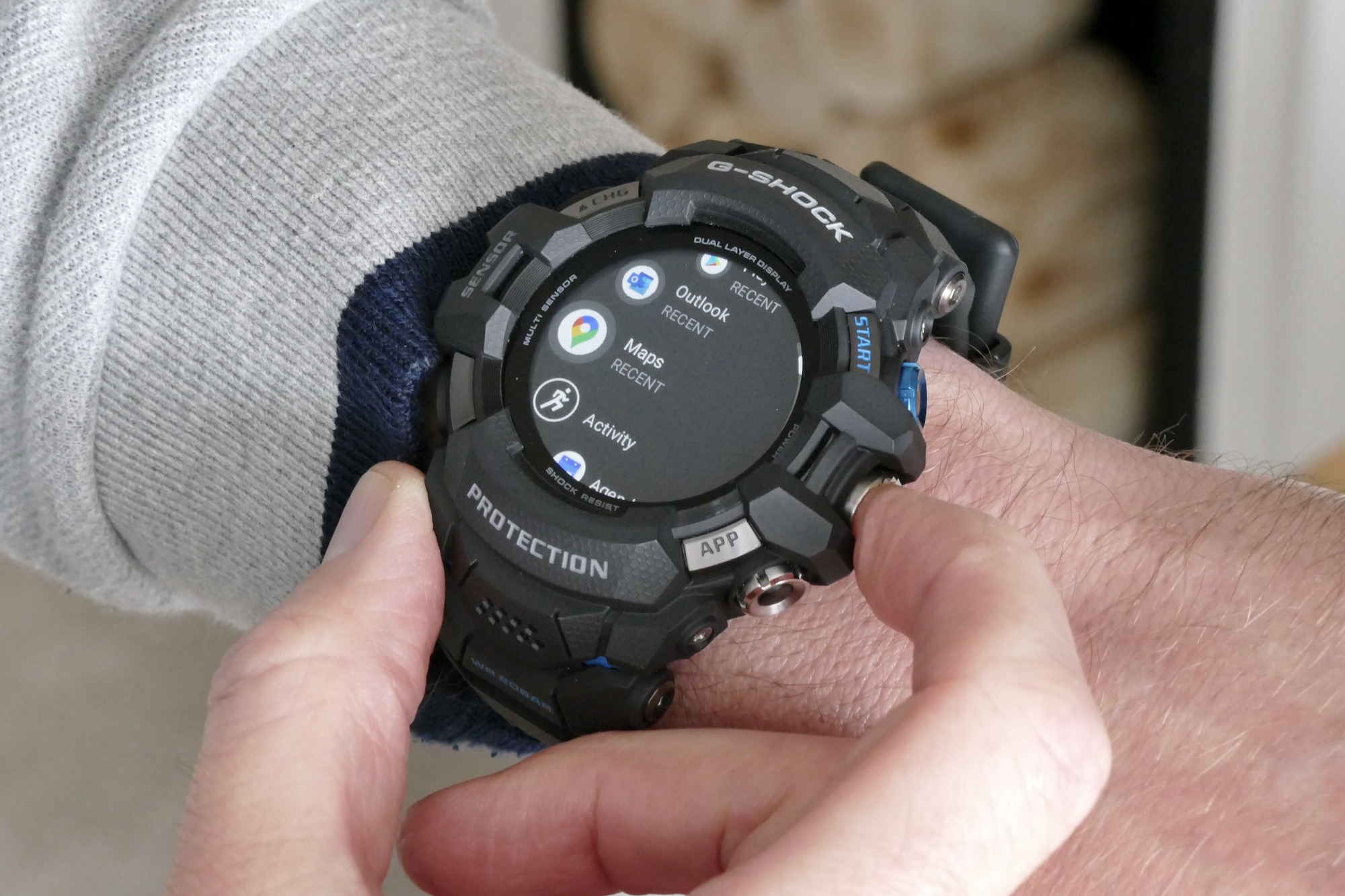“The GSW-H1000 is everything a G-Shock collector would want a G-Shock smartwatch to be, but the unique style, lack of tech focus, and high price make it a tough sell for non-G-Shock fans.”
- As tough as smartwatches get
- True G-Shock design
- Comfortable to wear
- Two-day battery life
- Massive case means it won't suit everyone
- Lack of technical focus
- Expensive compared to other smartwatches
Casio’s G-Shock watches are a collector’s dream. The brand releases multiple exciting collaborations, consistently updates colors throughout its range, and releases models specific to location making them even more desirable for those gazing at them jealously from abroad. One G-Shock is, quite simply, never enough.
The new GSW-H1000 smartwatch is a pure G-Shock, from the way it looks to the way it operates, and therefore it will instantly appeal to G-Shock devotees. There’s absolutely nothing wrong with preaching to the choir, as Casio is obviously doing here, but what if you’re a tech fan on the lookout for a new smartwatch?
Design
It’s immediately obvious the GSW-H1000 is a G-Shock watch as it takes styling cues from a variety of existing G-Shock models, and congratulations should go to Casio for not watering down the looks. There’s no mistaking it for any other watch and everything G-Shock fans love about the design has been included. Perhaps surprisingly, it’s incredibly “watch-like” and if you’ve worn a previous generation Mudmaster, the Rangeman, or an older Gravitymaster G-Shock, the GSW-H1000 feels very similar to all of them.

As far as making the GSW-H1000 a true G-Shock smartwatch goes, Casio has fulfilled the brief perfectly. However, by rigidly sticking to the obvious remit, problems for a wider audience are introduced, starting with the size. It’s massive, and I say this as someone who likes G-Shock’s larger watches. The case measures 65mm by 56mm, and is 19.5mm thick, with a total weight of 104 grams. It’s an absolute whopper.
Don’t dismiss it entirely yet, because G-Shock has been making big watches for years, and its experience shines through on the GSW-H1000 because it’s surprisingly comfortable to wear. The urethane strap is soft and pliable, yet stiff enough to keep the watch centered on your wrist. Wear it loose enough so you can fit a finger between the strap and your wrist — a G-Shock recommendation — and it never feels ungainly, or that heavy either.

It hasn’t become hot or sweaty, and there were times where I forgot I was wearing it, mostly due to the balance. It sits perfectly on my 6.5-inch wrist without needing to be worn too tightly or loosely, due to a pair of soft silicone pads where the strap meets the body. The case back is made from titanium which helps keep the weight down, aluminum has been used for the Start button, and the rest of the case is a tough resin that will be familiar to anyone who has owned a G-Shock before.
The watch’s thickness is the main drawback because it doesn’t fit under cuffs. Getting it under a shirt cuff is impossible, and even stretchy cuffs pose a problem as it soon gets uncomfortable when tucked under them. The only option is to push your cuff back, exposing the watch for all to see, and this presents the next issue — it’s not a wear-with-anything watch. This is probably true for most G-Shocks, but the GSW-H1000 is both sporty and super tough, and in my opinion not suitable for smart wear.

As part of G-Shock’s sport-orientated G-Squad range, this isn’t a surprise, but it does mean you may not want to wear the GSW-H1000 all the time. Many of the benefits from smartwatch functionality like notifications and fitness tracking come with long-term use, and if there are situations where the watch isn’t always suitable to be worn, value can quickly be called into question.
There are three models available, the H1000-1 seen here in our photos with blue accent colors, the H1000-1A without the blue, and the brighter H10000-1A4 with a red strap and accents.
Toughness, sensors, and apps
Although this is a smartwatch, it’s still every bit as tough as you’d expect a G-Shock watch to be, and it goes some way to explaining the overall size and weight of the GSW-H1000. It has 200-meters water resistance, yet still has a microphone, and is entirely shock resistant despite having a glass-covered touchscreen. A special titanium carbide finish minimizes the chance of scratching the case and ruining the attractive matte finish. It’s the toughest, most damage-resistant smartwatch you’ll buy, from a company that has made exactly this kind of watch since the early 1980s.
There’s GPS inside and a heart rate sensor on the back of the watch, along with other sensors usually found on a G-Shock — accelerometer, air pressure, gyroscope, and a magnetic compass. It does not have a blood oxygen sensor or wireless charging. Instead charging is performed using a magnetic plug that attaches to the side of the watch.
Every bit as tough as you’d expect a G-Shock watch to be
The GSW-H1000 is the first G-Shock to use Google’s Wear OS software. It connects to the standard Wear OS app and Casio’s G-Shock Move app. The Move app is the same used to sync with the GBD-H1000 sports watch, and keeps track of activity. It’s not essential for using the smartwatch, but it is if you want to use the G-Shock activity tracking suite. However, it doesn’t always reliably reconnect to the watch, sometimes forcing you to pair them together again.
Screens
There are two screens on the G-Shock GSW-H1000, just like the Pro Trek WSD-F30 and the Mobvoi TicWatch Pro 3. The main screen is a 1.2-inch LCD, overlaid with a monochrome LCD for always-on duties. It’s a power-saving technique that avoids having to use the full-color screen for an always-on time display, and it works really well. There’s a helpful option to have a bright or dark always-on display, which aids visibility in difficult conditions.

Touch sensitivity is great, but it’s perhaps a little too sensitive sometimes with the watch selecting features or options accidentally when scrolling through menus. The awkwardly shaped raised bezel doesn’t make swiping particularly comfortable, but overall use isn’t affected.
It’s a shame there are only two watch faces to choose from, and the option to change the background effect and color doesn’t provide enough customization. It’s surprising G-Shock hasn’t included digital representations of its many dial designs. Personalizing the watch face is part of Wear OS’s appeal, and I expect many (most?) people who buy this watch will be G-Shock fans who will have their favorite dial designs.
Instead, the complications on the H1000’s dial can be changed and there are multiple configurations, including a series of hexagon-shaped indicators, just like a DW-6900 watch. The only downside here is that some configurations alter the always-on LCD’s look, and not always for the better.
Performance
Oddly, we don’t know what the processor is inside the G-Shock GSW-H1000 because Casio won’t tell us. Despite repeated requests, the company states that it’s proprietary information and won’t be revealed, although the wording of one piece of communication does suggest it’s a Qualcomm chip inside. This wouldn’t be much of a surprise, as Qualcomm is about the only game in town when it comes to wearable tech platforms, making Casio’s stance even more unusual.
There’s no Qualcomm branding on the GSW-H1000’s box, so the decision not to state which chip powers the watch may be down to restrictions placed on it by a licensing agreement. This leaves us speculating that if it is a Qualcomm chip inside the GSW-H1000, is it the aging Snapdragon 3100 Wear, or the new-and-desirable Snapdragon 4100 Wear chip?

Given the rarity of the Snapdragon 4100 and the benefits it can bring, I would want to shout about it if it was powering my expensive new smartwatch. However, if I was making a smartwatch in 2021, charging $700 for it, and using the Snapdragon 3100 chip, I’d want to stay pretty quiet about it. Sadly, Casio’s silence on the subject means we automatically lean towards this as the most likely scenario here. If I’m wrong Casio, feel free to tell me.
Are there any clues in performance as to the chip it uses? The GSW-H1000’s software experience is smooth and fast, and has been completely reliable during my time with it so far. It has remained connected to my Google Pixel 5 and reconnected on most occasions without opening the Wear OS app to prompt it after being out of range.
Installing apps from Google Play is still ponderous, but that’s the same across all Wear OS smartwatches, but performance is decent even when using notoriously slow apps like Google Maps. Wear OS benefits from having 1GB of RAM when paired with the Snapdragon 3100 Wear chip, and that may be the case here. Notifications have been solidly reliable, which makes a nice change for Wear OS.
The GSW-H1000’s battery life is good due to the dual-screen system, and it lasts two days with notifications and all-day heart rate monitoring active, but without wearing it overnight or tracking a workout. Although good, the battery life doesn’t reflect the benefits seen with the Snapdragon 4100 in the TicWatch Pro 3. Charging is slow, with Casio stating three hours to full.
Casio has not really prioritized tech on the H1000 — it doesn’t even have NFC for Google Pay — which may be fine for watch people, but it’s not for smartwatch people, and it’s that group which it really needs to attract.
Activity tracking
Press the App button on the watch and you access a carousel of special G-Shock Move features, including data from the sensors, a tide graph, the compass, and the G-Shock activity tracker. The monochrome carousel rotates with touch, but the rest of the control system is annoying as there’s no back button, so if you mistakenly select a feature (which can happen with the overly sensitive screen), all actions kick you out to the main watch face.
There’s also a feature called Sensor Overlay which uses the camera on your phone to record a video of your activities, and places stats and data collected from your watch onto the image. Using it is quite complicated and requires you to read the instructions published on Casio’s help pages, and then use the Move app to stitch the data and your recorded video together. It’s too long-winded for limited benefits.
While Google Fit is onboard to use, and there are multiple fitness apps for Wear OS inside the Play Store, you could elect to use G-Shock’s own app to track workouts. The Activity app certainly fits with the look of the watch with its simple, monochromatic display, making it clear and simple to read at a glance. There are various activities covered, and you can set a target workout time, but it’s a little fiddly to get started and alter these aspects. Google Fit is definitely quicker and easier to use for the casual exerciser.
Tracking workouts with the GSW-H1000 made me a little concerned about the accuracy of its data. I noticed unexpected differences to what I’m used to seeing with calorie count and heart rate, and compared it to the Apple Watch Series 6. The G-Shock recorded half the calorie burn, and the average heart rate was totaled as 106 beats-per-minute (BPM) compared to the Apple Watch’s estimate of 115BPM. Like the GBD-H1000, the emphasis seems to be on running, although there are plenty of other workouts to track, including biking, kayaking, fishing, and surfing.
Price and availability
Wallets at the ready, G-Shock fans? The G-Shock GSW-H1000 costs $699 or 599 British pounds, and is available through G-Shock’s online store in the U.S. and the U.K., plus through its retail partners now.
Our take
The G-Shock GSW-H1000 is a difficult one to sum up. I’ll start by saying the GSW-H1000 is absolutely a G-Shock watch, not a watered-down G-Shock smartwatch, and will sit alongside the others in your collection without looking out of place. Casio hasn’t cut corners or edged away from its madder design trademarks, and I’m confident G-Shock fans will love the GSW-H1000.
I fit into this category, but those who aren’t invested in the brand will probably struggle, and I don’t think Casio is looking to convert people into G-Shock fans with the H1000. Many will almost certainly find the giant size and shape off-putting, no matter how well the watch hides its dimensions, or how impressive the engineering is to make sure it retains that all-important G-Shock toughness.
The refusal to share the H1000’s technical details may alienate tech fans too. I want to know what chip is inside because it helps quantify value and compare its performance to the competition. The questions raised by Casio not providing basic technical details are a distraction from the watch itself. Casio should be upfront about the situation, whatever it is, rather than avoiding it.
G-Shock fans are going to love the GSW-H1000
The lack of transparency and limited focus on tech may put people off, as could the unique design that’s aimed squarely at G-Shock aficionados, but it’s the high price that’s the biggest barrier to the GSW-H1000’s success. At $700 it’s more expensive than all our top smartwatch recommendations, which puts the G-Shock in a difficult situation when trying to attract those who prioritize technology.
However, I don’t think Casio sees these watches as its competition. The GSW-H1000’s price is approximately what G-Shock collectors expect to pay for the brand’s high-level Master of G watches like the GWF-A1000 Frogman and Full Metal watches like the varied B5000 range. Smartwatch buyers don’t follow this logic, and do consider the Apple Watch and TicWatch Pro 3 as the alternatives, so the $700 price tag simply makes the GSW-H1000 look very expensive by comparison.
G-Shock fans are going to love the GSW-H1000, but smartwatch buyers would be better advised to look at the many cheaper options that emphasize the tech aspect, whether that’s through the processor, additional health tracking sensors, or even NFC for mobile payments.
Is there a better alternative?
Yes. If you want to buy a smartwatch, not a G-Shock watch, we have several recommendations, and none of them cost $700. If you own an iPhone and want a smartwatch, the Apple Watch is the best, and at $400 aluminum Apple Watch Series 6 looks like good value next to the GSW-H1000, and even more so if you choose an Apple Watch SE. If you own an Android phone we recommend the Samsung Galaxy Watch 3. Samsung’s Galaxy Watch 3 or a TicWatch Pro 3. All three of these smartwatches are technically impressive, have great software, and are more wearable than the G-Shock.
If you want a smartwatch from a watchmaker, the choice becomes smaller, and the prices are usually larger. TAG Heuer’s Connected models cost at least $1,800, and Hublot’s Big Bang e is three times that amount. Interestingly it’s Casio which provides a good middle ground with the G-Shock GBD-H1000, which is a sports-orientated watch functionality including notifications but no touchscreen, and costs $400.
If you want a less techy watch, Casio’s range of connected G-Shock watches like the GST-B400 G Steel may fit the bill. These models all have basic smartwatch connectivity, but no notifications.
How long will it last?
This is probably the toughest, most durable smartwatch you can buy. If you work or play in harsh environments, the G-Shock GSW-H1000 will be your best friend, as it’ll shrug off a huge amount of abuse. The battery and the software will stop the GSW-H1000 from lasting indefinitely, but you’ll still be good for at least a couple of years.
Should you buy one?
If you want a smartwatch to wear every day and value tech over design, then there are better choices available for much less money, but if you’re a G-Shock collector you’ll really like the GSW-H1000, and can add two stars to the score here.

